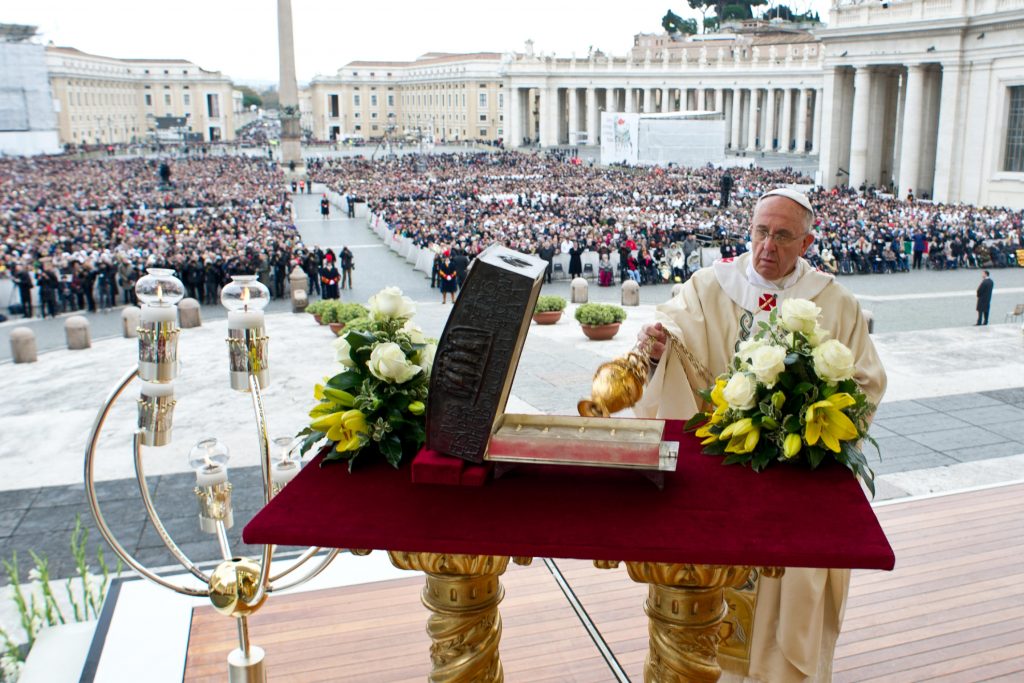ROME - In July 1968, Pope Paul VI reaffirmed the Catholic Church’s opposition to artificial birth control - remembered today as one of the most controversial Church decrees of the modern era.
One month earlier, 50 years ago today, on June 26, 1968, Paul VI issued a proclamation that the Catholic Church had discovered and authenticated the bones of St. Peter. It was an announcement of historical magnitude, which, at the time, was just as divisive and much-discussed, albeit soon eclipsed by the decision that followed in July.
While few people know the great detective story of the discovery of the bones of the Church’s first pope, even fewer are aware of the fact that the entire effort was privately financed by a Texas oil magnate.
In a new book, The Fisherman’s Tomb, John O’Neill chronicles that story - one that has largely been untold because of the fact that Catholic oilman George Strake insisted on his involvement being kept a secret during his lifetime.
In an interview with Crux, O’Neill said he believes that the story of the bones of St. Peter is more than just a story about one man and his relics, but rather a lesson of faith for modern believers - a way to rediscover the zeal that early Christians had, which motivated them to sacrifice their own lives rather than deny Christ.
That uncompromising commitment to the faith is what motivated Strake, who, during his lifetime, became one of the wealthiest individuals in the United States after discovering a massive oil field and soon thereafter, began to pour some of his enormous fortune into Catholic related causes.
For those reasons, Pope Pius XII and then-papal secretary Giovanni Montini (later Pope Paul VI) dispatched a 30-year-old American priest, Father Walter Carroll, to travel to Houston, Texas and convince Strake to back Pius XII’s secret efforts to find the bones of St. Peter, which had long been a mystery that had haunted archaeologists, spurred Church skeptics, and frustrated her defenders.
And to make the request even bolder, Strake was not only mandated to keep the project secret, he was effectively asked to sign a blank check to underwrite the entire thing.
Strake agreed to the pope’s conditions, and he also kept the story under wraps long after the project was complete - a decision that O’Neill told Crux had two “bad consequences, because people didn’t hear about it and people couldn’t say ‘thank you’.”
The “Apostle Project” - the name for the secret excavation efforts - would span decades, a period during which Strake became friends with two popes. In 1951, Montini went on a classic American-style road trip with Carroll that even included a visit to Strake’s vacation home in Colorado.
While the project took a number of twists and turns, eventually bones belonging to an individual believed to be 5 feet and 7 inches, who was between the age of 60 and 70 at the time of his death, and compatible with someone who was crucified upside down, as tradition holds St. Peter was, were found and authenticated.
Not only that, the bones had been wrapped in a purple and gold cloth, signifying the person had been of great esteem. A nearby inscription read, “Peter is within” - leading Pope Paul VI to declare the bones to be Peter’s “in a manner which we believe convincing.”
Today, trips down to the Vatican grotto, known as “the Scavi tour,” are among the hottest tickets in Rome. While devout believers and doubting critics alike are eager to claim one of the limited number of spots to see where the bones were first discovered, O’Neill says few realize that it’s not just Peter buried there, but many first century popes and thousands of Christians martyred for their faith.
During the excavation process, there were many cynics inside and outside of the Church that sought to discredit the findings - something O’Neill says continues to this day.
“They want to view early Christianity like a Santa Claus story, like it never really happened and someone made it up,” he said. “So, confronting them with physical and tangible relics is a confront to secularism.”
In November 2013, Pope Francis became the first pontiff to publicly unveil the relics at an outdoor mass in front of St. Peter’s Basilica - where he both prayed in front of the box containing the bones and then grasped it in his arms for several moments.
While the Vatican has been careful not to declare the bones to be Peter’s with absolutely certainty, they’ve also encouraged continued veneration of them, as has Francis, as a means of both deepening faith in the office of the papacy and the lives of those, like Peter, who died believing in that same truth.
O’Neill told Crux that the lesson for today - both in the story of the bones of St. Peter, as well as the inscriptions that surround his resting place - is a reminder of the continuity of the faith.
“What they reflected nearly 2,000 years ago are exactly the same things that we believe in today,” he said. “They believed from the very beginning that Christ, through his crucifixion, had opened the road to redemption.”
For that reason alone, O’Neill insists that George Strake’s secret history - one of the Church’s best-kept secrets - needs to be told, so that modern believers might be motivated to live with the same courage and conviction.
“The early Christians sacrificed a tremendous amount, and we’re capable of that if we really believe. They were willing to give their lives,” he said. “What greater faith can you have than that?”

